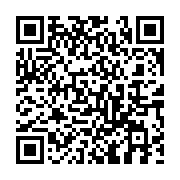With ActiveBarcode you can create barcodes. Lets say you'll have data in a database or spread sheet that you want to use to generate a barcode from. This is where ActiveBarcode will help you. ActiveBarcode is used to create and print barcodes or embed them into your documents so that you can scan them instead of entering the data by hand. This is a time saving and secure way for storing and transferring data.
You'll choose one barcode symbology from different
barcode types that is required for your need or matches your purpose. You'll enter a text and ActiveBarcode will create the resulting barcode for you. This process can be done one on one i.e. with the
barcode generator or it can be automated with the Barcode Object.
With ActiveBarcode you have the option to create barcodes as static bitmap images or vector graphics or even to keep the barcodes in your documents as a dynamic barcode object.
Barcodes as static images and vector graphics:
Barcodes as
bitmap images and
vector graphics can't be changed once they have been created. So if a barcode needs to be changed, you need to remove the static image of the barcode and insert a new one. Often this is not ideal when you want to automate a barcode. I.e. if in Excel a cell content changes and you want that a barcode changes, too. In that case you can't use a barcode as a static image. But static images are very universal and platform independent. You will choose to create your barcodes as an static image or vector graphic if you want to hand out your barcodes or documents that contain these static images to someone else who does not use Windows or who does not want to use the ActiveBarcode software.
Conclusion:
Static images and vector graphics are great for interchange and platform independent usage. The barcodes objects makes a barcode active and dynamic:
Using the
barcode object you will have a barcode that is dynamic so that the barcode can be changed easily. The data and the appearance of the barcode might be changed manually or automatically. If you want to bind a barcode to a excel cell you will need to use the barcode object as this can't be achieved with a static image.
Using the barcode object is the more flexible and advanced way to use barcodes within your documents. To use the barcode object it is required that the ActiveBarcode software with the barcode object is installed on the machine. If you embed the barcode object into your office documents and send them to another user, he can of course view the barcode but without barcode object installed, it will behave like a static image. If that other user should be able to also use the barcode object within your document, he or she will need to install ActiveBarcode, too.
Conclusion:
Use the barcode object for more flexibility.  A barcode (also bar code) is a visual, machine-readable representation of data. The data usually describes something about the object that carries the barcode.
A barcode (also bar code) is a visual, machine-readable representation of data. The data usually describes something about the object that carries the barcode.  Initially, barcodes were only scanned by special optical scanners called barcode readers. Later application software became available for devices that could read images, such as smartphones with cameras. You can read more about barcodes at wikipedia.
Initially, barcodes were only scanned by special optical scanners called barcode readers. Later application software became available for devices that could read images, such as smartphones with cameras. You can read more about barcodes at wikipedia.